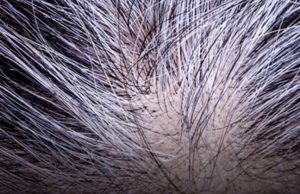
Plastic cutting boards, while incredibly convenient and easy to care for (they can go in the dishwasher unlike wood and even bamboo ones), can harbor bacteria in those knife-inflicted grooves that mar the surface over time. Bleach can kill lots of these bacteria, but we get that not everyone wants to introduce this chemical into their kitchens — let alone their food prep surfaces.
With that in mind, here’s how to clean your plastic cutting boards without using bleach.
Why Avoid Bleach?

Bleach is a powerful disinfectant, but its strong chemical composition can pose risks to both human health and the environment. When used improperly, bleach can emit harmful fumes and cause skin irritation. Additionally, the runoff from bleach can negatively impact aquatic ecosystems. To maintain a clean and sanitary kitchen without resorting to bleach, consider these alternative methods:
1. White Vinegar and Water Solution
White vinegar is a natural disinfectant that can effectively kill bacteria and remove odors from your plastic cutting board. Mix equal parts of white vinegar and water in a spray bottle. Spray the solution generously over the surface of the cutting board, and allow it to sit for about 10 minutes. Then, rinse the board thoroughly with water and dry it with a clean cloth. The vinegar smell will dissipate as the board dries.
2. Hydrogen Peroxide and Baking Soda Paste
Hydrogen peroxide is another gentle yet effective disinfectant. Create a paste by mixing hydrogen peroxide and baking soda until it forms a thick consistency. Spread the paste over the cutting board, focusing on any areas with stains or odors. Let it sit for about 15 minutes before scrubbing gently with a brush or sponge. Rinse the cutting board with water and pat it dry.
3. Lemon Juice and Salt Scrub
Lemon juice contains natural antibacterial properties and can help eliminate odors. Cut a lemon in half and sprinkle a generous amount of coarse salt over the cut side. Use the lemon as a scrubber to clean the surface of the cutting board. The salt acts as a gentle abrasive, while the lemon juice disinfects and refreshes the board. After scrubbing, rinse the board and wipe it dry.
4. Tea Tree Oil Spray

Tea tree oil is renowned for its antimicrobial properties. Add a few drops of tea tree oil to a spray bottle filled with water. Shake well and spray the solution onto the cutting board. Allow it to sit for a few minutes before wiping it off with a damp cloth. The tea tree oil will leave a pleasant scent while effectively combating bacteria.
5. Dish Soap and Hot Water
Regularly cleaning your plastic cutting board with dish soap and hot water can help prevent the buildup of bacteria. After each use, wash the board with soapy water, using a brush or sponge to remove any residue. Rinse the board thoroughly with hot water and pat it dry with a clean towel. This routine maintenance can go a long way in keeping your cutting board clean and safe to use.
6. Regular Sanitization Routine
Regardless of the cleaning method you choose, it’s important to establish a regular sanitization routine for your plastic cutting board. This includes cleaning it after each use and performing a more thorough disinfection at least once a week, or more often if the cutting board is heavily used.



















